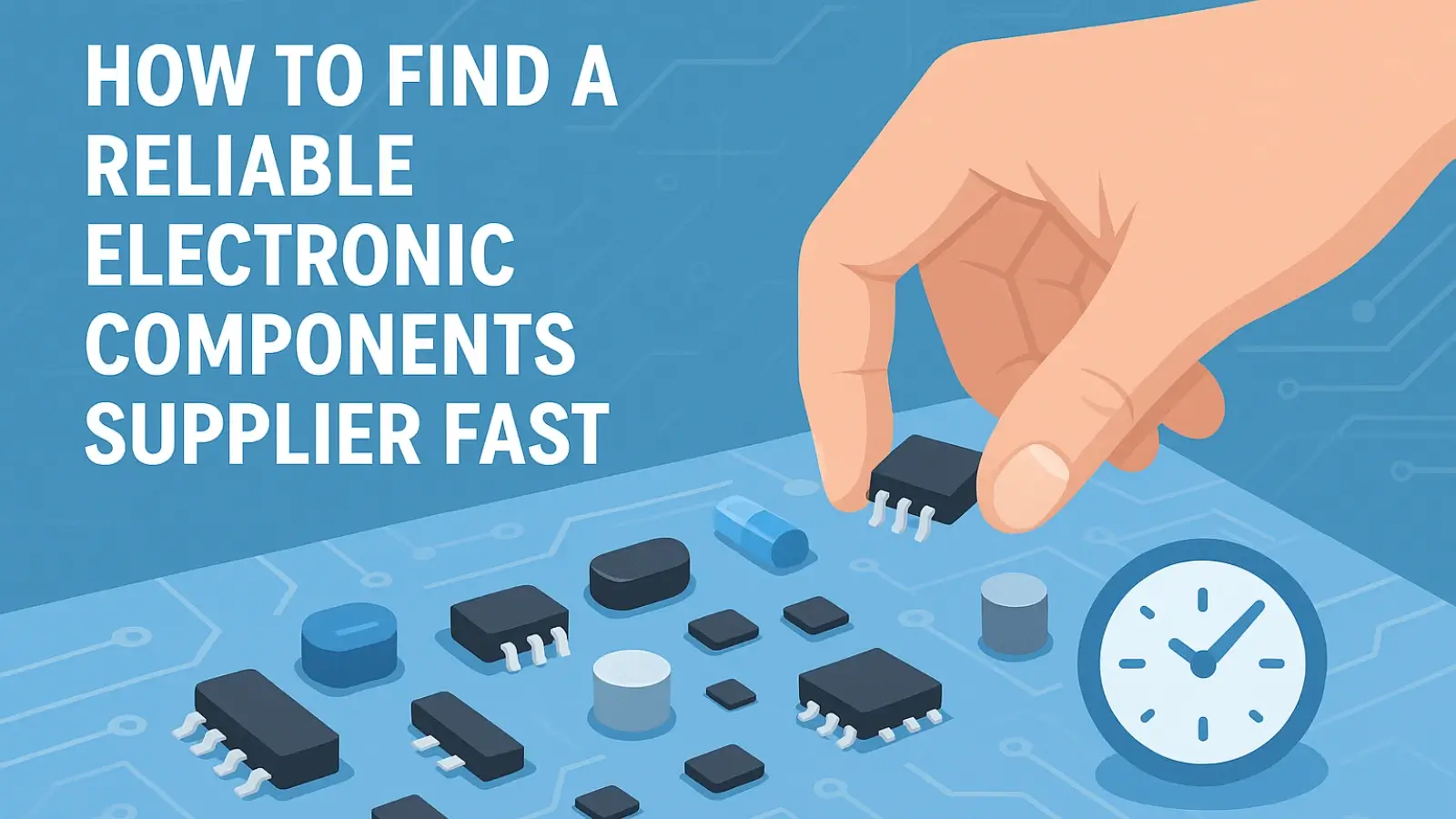


Anyone in procurement has lived through this nightmare: the client is calling three times a day, the production line is staffed and waiting, and everything is stalled because a handful of chips are missing. You call the supplier, and the answer is always vague—“soon,” or “give it another week.” Meanwhile, your workers are being paid to sit around, and your project timeline goes up in smoke.
And sometimes it’s worse. You finally find another source, pay a premium, and the shipment arrives. But once you solder the parts, the board fails. They were counterfeits—refurbished chips passed off as new. Now you’ve wasted money, lost precious time, and have to face an angry client.
In a market where shortages have become the norm, finding a reliable supplier quickly isn’t about saving pennies. It’s about keeping production on track, keeping your customers confident, and keeping your sanity.
There’s a saying in procurement: “Parts can be expensive, but they can’t be late.”
A small IC that costs $20 can shut down a production line worth tens of thousands per day. Paying a bit more for fast delivery is almost always cheaper than missing a deadline. I’ve seen it first-hand: one project saved 8% on components by going with a cheaper vendor, but ended up losing far more when the shipment slipped two weeks.
Reliability is just as critical. Shortages bring out the worst in the market—counterfeits, grey-market stock, and suppliers who sell “fake availability.” Take the MAX3673ETN+: a popular frequency synthesizer. When demand spikes, shady sellers claim it’s in stock, take payment, then scramble to find it elsewhere. By the time they admit they can’t deliver, you’re already behind schedule.
In situations like this, working with a trustworthy electronic components supplier is often the difference between hitting your deadline and watching the production floor sit idle.
That’s why partnering with an experienced DiGi Electronics IC supplier matters. A dependable supplier is the opposite of guesswork: they’ll confirm inventory right away, provide batch numbers, and tell you exactly when it will ship. That kind of transparency is what buyers really need—not excuses.
You don’t need a long checklist. Here are the signals that matter most:
ISO, RoHS, and a D-U-N-S number aren’t just paperwork—they’re proof the company isn’t a pop-up shop.
Ask about stock for something like NJW1504V-TE1. A reliable supplier will confirm availability or give a clear lead time. A vague “we’ll get back to you” usually means they don’t have it.
A global sourcing network is critical. For example, a mature partner can pull stock from multiple regions—so a part that looks unavailable locally, like the DS1086HU-CO2+T, can still arrive within days. If you’re evaluating options and want to work with an experienced electronic components supplier—Click here to explore what a trusted partner looks like.
Don’t just trust testimonials on a website—ask peers in the industry. If a supplier has been serving big clients for years, that’s the strongest endorsement.
There’s always debate: spread orders across multiple vendors, or consolidate with one partner?
I’ve been burned before by splitting orders. On paper it saved 5% in unit cost, but the factory sat idle for three days waiting for the last shipment. That downtime cost far more than the “savings.”
The real test of a supplier isn’t what they promise—it’s whether they deliver when parts are scarce. Here are a few examples that separate the dependable from the rest:
One client I worked with was stuck on a delivery of the DS1086HU-CO2+T. The project was already behind schedule, and other vendors quoted “maybe two months.” DiGi sourced and shipped in under a week, saving the production line from halting. That’s what reliability looks like in practice.
When you’re in a rush, here’s the short version:
If a supplier hits these marks—and can back it up with action—they’re worth sticking with.
Most projects don’t fail because engineers drew the wrong schematic. They fail because the parts never arrived. Speed and reliability are what keep production lines moving and clients happy.
Spotting the right supplier isn’t complicated: certifications, inventory honesty, broad networks, real feedback, and one-stop service. Stick to those and you’ll avoid most disasters.
Of course, in today’s shortage-driven market, not many suppliers check all the boxes. If you’re under pressure and struggling to source critical ICs, finding a dependable partner can save your project. Whether it’s rare chips like the MAX3673ETN+ and NJM567D, or mainstream Intel and Micron parts, the right supplier keeps your production on schedule.
In the end, choosing the right supplier isn’t about saving pennies. It’s about fewer delays, fewer sleepless nights, and making sure your clients never doubt you.